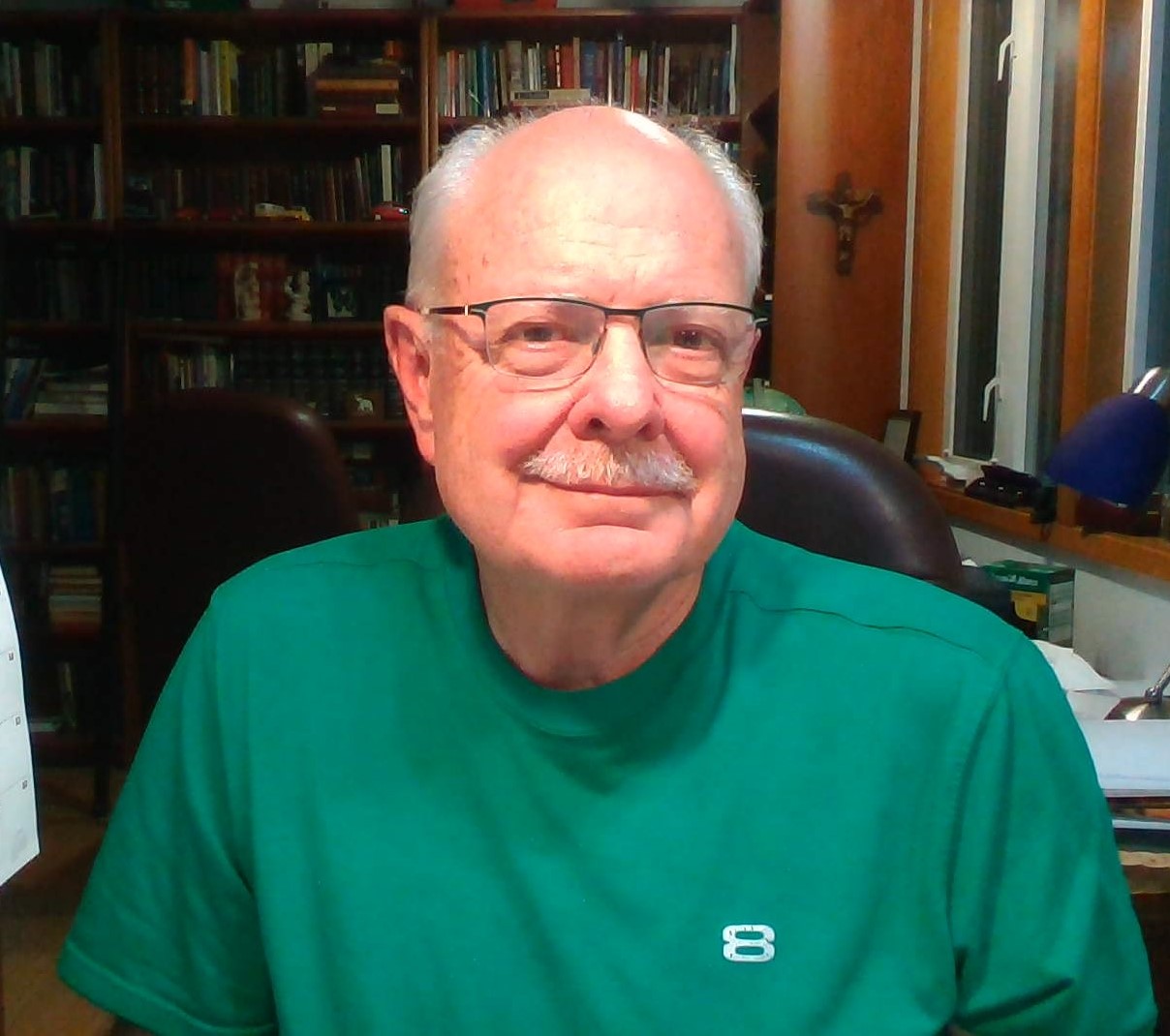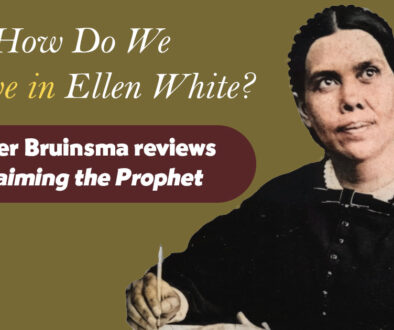A Most Beautiful and Most Wonderful Book
Reviewed by Jack Hoehn | July 31, 2020 |
There are many good people I would like to share this book with. I would love to share it with every young Adventist from high school to doctoral program who loves nature and wants to be a scientist. I would love to share it with every determined creationist who is searching for the God of the Bible’s hand in nature. I would love to share it with  every SDA administrator trying to maintain a faithful and honest church. I would like to share it with every pastor who has scientists in their congregation. And although it has much to say to professional scientists, written by a scientist, it is a very accessible and easy-to-read book. Any Christian, especially those of us who come from fundamentalist, Biblical literalist traditions, can understand why this book was written and benefit from following Dr. Hayward’s life and faith story.
every SDA administrator trying to maintain a faithful and honest church. I would like to share it with every pastor who has scientists in their congregation. And although it has much to say to professional scientists, written by a scientist, it is a very accessible and easy-to-read book. Any Christian, especially those of us who come from fundamentalist, Biblical literalist traditions, can understand why this book was written and benefit from following Dr. Hayward’s life and faith story.
Clearly an intelligent and faithful man, Dr. Hayward is a Seventh-day Adventist “life scientist,” an “ecologist” (the study-logos, of our home-oikos). He points out that this branch of science uses a broad range of scientific tools—“mathematics, physics, chemistry,… biology” plus geology to study our part of the universe and the life in it. He earned his PhD at Washington State University, Pullman, Washington, in zoology. His research has been published in more than seventy peer- reviewed articles.[1]
Professor Hayward the teacher has been deeply involved in the Seventh-day Adventist educational system his conservative pastoral and administrative parents raised him in. He studied or taught at numerous SDA institutions—Fort Worth Junior Academy, Ozark Adventist Academy, Southwestern Union College, Walla Walla University, Union College, and Andrews University, where he became Professor of Biology, researching and teaching students since 1986.
Science Informing Faith
His book is a study in progressive Christian thought, from the inherited family position as a fundamentalist Biblical and Spirit of Prophecy literalist, through each of the small steps, carefully documented and explained, that (let’s use the scary word) evolved him into the paradox of believing the science of geology and the mechanisms of evolution, but still convinced that they are due to the Creator God. Although he could no longer accept Biblical literalism, he has not abandoned the Seventh-day Adventist church as his denominational home.
There are four sections, well organized and clearly explained, showing where he and Adventism started and how he and his faith progressed. The love of the natural world in childhood led to the fascination with all things natural that guided him into science. His journey clearly was in the cradle of Adventism, with mentors such Sam Campbell (Adventism’s favorite non-Adventist naturalist), Ernest Booth, Harold Clark, Dexter Beary, Samuel Myers, Larry McCloskey, John Stout, Richard Ritland, and Bill Chobotar.[2] Each person contributed an insight, a view, evidence, information, facts honestly acknowledged without atheistic bias that removed the unstable constructs of Young-Earth-Creationism. Although his investigation changed his view of the Bible as a source for scientific information, it left unshaken his faith that God of the Bible is the Creator—just not as he was taught by his father’s Adventism.
Perhaps you have been fully convinced that the only way for us to be saved is to accept the Bible creation story as literal truth, and that any Christian who seems comfortable with Charles Darwin’s ideas and the scientific evidence for the age of the earth is deceived. Then you might wish to read this book to point out its weaknesses and fallacies. This book would be a fair test of those convictions. Even if you are planning a trip to the Young-Earth Creation/Noah’s Ark Museums in Petersburg[3] and Grant County[4], Kentucky, this book could be a reasonably priced guide to help you evaluate what you see there.[5]
Abandonment of Idolatry
The writing is full of the care that gives meaning to the word “careful.” [6] Each idea, each challenge to Biblical literalism, is slowly and logically explained. Each challenge to the presumptions of Young-Earth-Creationism (either for age of the universe, the age of the planet, or the chronology of life on the planet) is clearly and thoughtfully presented. The impossibility that a single Noah’s Flood might ever be able to explain all the geological layers and the fossil record in them is step by step made very clear.

As his church (and father’s) hero, Ellen White, admitted, “Relics found in the earth do give evidence of conditions differing in many respects from the present.…”[7] But her reliance on Noah’s flood and her promotion of a literal, recent creation week are shown to be mistaken. Hayward explains that “losing faith” in literalism—the forced belief in things that evidence shows unlikely or untrue—is not a loss of faith, but an “abandonment of an idolatry,” the worship of a false picture of God and a misunderstanding of the Bible.[8] This leads carefully and thoughtfully to the book’s last chapter.
Is There Truth in the False?
In the last chapter Dr. Hayward faces the huge underlying issue: What if the Bible record of the creation is neither chronologically nor scientifically accurate and is very incomplete? What if Ellen White’s support of a recent creation and a Noachian explanation of geology is absolutely inadequate? Then why does Hayward still believe in the kind of God presented in that inaccurate Bible? And why does he remain a member of the Ellen White-founded Seventh-day Adventist church?
Is it inertia, a random accident of birth much like evolution proposes for the complexity and novelty in life? Jim Hayward the scientist just happens to be an Adventist, like the duck-billed platypus just happens to look like a mammal but lays eggs? Is he just a fascinating specimen, an accident of birth into his Adventist family and culture in a randomly evolved planet?
Please read his own answers to these questions, but the answer is no. I must not trivialize them but his answers are found in an acknowledgement of the abundant extra-material realities—beauty, consciousness, music, art, compassion, selflessness, love, Jesus, and Jesus-like humans, many of whom he admits he has found in his Adventist family.
Unless you have purchased and read this important and mind-opening book, perhaps you should stop reading now.[9] For only in the context of admiration for his book would I dare to oil the single squeaky hinge I have found. Jim Hayward’s trajectory in Adventism (not in his science) has largely mirrored my own. Youthful literalism, Biblical inerrancy, Ellen White’s visionary shortcuts to the throne of God, Young-Earth-Creationism—all this was my cradle milk too. And my life has followed a progression of evidences requiring movement in truth to a progressive, long-age creationism fully open to all the evidence available.[10]
ID Is Not Theology
The disconnect I experienced in Dr. Hayward’s story is disregard for the insights available from the Intelligent Design (ID) movement. The ID movement has been successfully cartooned as a “Biblical wolf in scientist’s clothing.” This leads to an unfortunate dismissal of the science of ID, based on theological, not scientific, arguments. I understand how as a scientist Dr. Hayward trusts the evolutionary consensus that Michael Behe’s arguments have all been adequately discredited by others. [11] He does not specify how Stephen Meyer’s work on the Cambrian Explosion[12] (supported by Günther Bechly’s work on the Devonian and other explosion[13])) or Douglas Axe’s molecular biology arguments[14] or Marcos Eberlin’s evaluation of foresight[15] are likewise invalid.
It is quite fair to ask the theodicy question, “What kind of a God would create a great controversy world that from the beginning involves death and decay, pain and suffering, along with reproduction, beauty, joy, and hope?” But it is not fair to deny that the scientific evidence requires an explanation of the origin of the information required for all life, because of theological concerns. You can’t dismiss the science of ID because of “What kind of a God would design that?” arguments. The scientific evidence of Intelligent Design of course has implications for theology, just as the scientific evidence of predation from the beginning of life has implications for theology. But it is not fair to discount the evidence for either because it doesn’t fit a current theology.
In fact, after dismissing ID as a useful resource, Hayward wisely returns to an “intelligent design-like” argument involving the origin of the DNA/RNA/Protein Folding system whose unguided evolution requires “huge leaps of faith no less significant than those made by members of the intelligent design community.” Thank you for that.[16]
As a member of the ID community, I only wish that this wonderful book had avoided repeating the misconstruction that ID is a “god of the gaps” argument. When, in fact, ID is an argument based on the increase of scientific information, not on its absence. Instead of rejecting the solid work of Intelligent Design, based on theodicy concerns, we should pass over to Adventism and our theologians the challenges the science of ID makes to both atheism and to theology. Honest responses to that science might include both a challenge to atheism and a challenge to adjust our theology.
This of course demands separate books yet to be written. Dr. Hayward’s book certainly opens the doors to both Adventists and other Christians held in thrall to an unnecessary fundamentalism. His story could unchain our members from the unaware idolatry of worshiping a false pseudo-science. It could help church leaders look for ways to open up to alternate understandings of the wonder of Creation.
Adventism refreshed may yet hold a theological key not yet fully explored for the faith of scientists. I look forward to an honest future for Adventism where the truth as it has been shown by scientists and the truth as is has been shown by Jesus can resume their partnership. Dr. Hayward’s book is a bright witness to this possibility.
Before you go…
We are living in unprecedented times. Physical gatherings like a weekly church service are not possible in many parts of the world. But meaningful community is more important than ever.
Adventist Today works hard to provide you with an extended family that values independent news, commentary and conversation in the Adventist community. In the last few months we’ve also added two new weekly innovations: our stimulating Sabbath Seminar and the uplifting Anticipating AT1 video programming.
To do all this, we really need your help and financial support.
So please help us continue to bring you excellent, informative and encouraging content.
You can donate one time by clicking this link
or
monthly by clicking this one
or call us toll-free at 800.236.3641
You can also give via an IRA Qualified Charitable Distribution here
FOOTNOTES:
(Figure 1 is from: By Charles Foster – Illustrators of the 1897 Bible Pictures and What They Teach Us http://associate.com/photos/Bible-Pictures–1897-W-A-Foster/page-0074-1.jpg, Public Domain, https://commons.wikimedia.org/w/index.php?curid=11785813 .)
[1] Researchgate.net lists 74 publications by Dr. Hayward. Google Scholar lists 952 citations by other scientists to articles written by Dr. Hayward and associates.
[2] Hayward mentions by name over 40 individuals all familiar within the Adventist church whom he credits with his present faith conclusions, and quotes even more supported by an 18-page bibliography.
[3] Home of the impressive Young-Earth-Creation Museum opened by Ken Ham, creationmuseum.org.
[4] Home of the huge reconstruction of Noah’s Ark, arkencounter.com. The two displays are said to be 45 minutes’ drive apart.
[5] The book Dinosaurs, Volcanoes, and Holy Writ, will cost you $29. On the other hand, admission to Ken Ham’s “Creation Museum” and “Noah’s Ark” reconstruction by a combo-ticket will be $79.95 each adult and $44.95 for each teenager. Parking extra.
[6] Perhaps due to the fact that Jim’s wife, Shandelle Henson, “read through the manuscript several times and provided insightful criticism advice and support every step of the way.”
[7]Ellen G. White, Christian Education, page 191.
[8] Hayward, page 202.
[9] Yes, I know you won’t! But please understand what comes next in the context of my full admiration for this book.
[10] I was born on Vancouver Island, just north of his Protection Island research site in the Salish Sea. I now live in Walla Walla. I know where Sprague Lake is. And many of his listed influential Adventists have had similar influence in my life. I am a physician, not a research scientist, but we share the theological concerns he outlines. I do not accept all of Dr. Hayward’s theological assumptions; for example, that Satan in Job should be distanced from the reality Jesus or John struggles with in the New Testament. Or that theodicy is an impossible task. But I am fully comfortable with his evidence-based scientific conclusions and open to his interesting theological suggestions.
[11] Behe’s work over the past 24 years has of course evolved, but the a priori assumption that his writings are “pseudoscientific” and have “all been soundly refuted” poisons the well. Here is a sympathetic response to those allegations. https://evolutionnews.org/2019/03/michael-behe-a-man-and-his-critics/
[12] See Debating Darwin’s Doubt.
[13] https://www.bechly.at/anti-darwinism-1/
[14] https://www.discovery.org/v/how-biology-confirms-design/
[15] https://www.discovery.org/m/sites/77/2019/03/Foresight-excerpt.pdf
[16] At an Origins of Life symposium organized by Lawrence Krauss in 2011, panel member NASA Senior Scientist Christopher McKay expressed the materialist’s dilemma on the complexity of early life with these words: “As we study early life, it’s looking more and more like life appears very early in earth history at a very complete and complex level already. It seems like Athena springing from the head of Zeus fully formed. It’s really quite a mystery and it’s forced some people to think, “Well, maybe it didn’t develop here. It came here and landed here.” And that’s why we get this impression of incredible development and complexity so early.” Creationists tend to agree with Dr. McKay’s evaluation of the science, although he continues to search for alternate sources for life with his rovers on Mars.
 Jack Hoehn is a retired physician living in Walla Walla, Washington.
Jack Hoehn is a retired physician living in Walla Walla, Washington.




